SENJUJI TEMPLE: One of the Largest Temples of Mie Prefecture
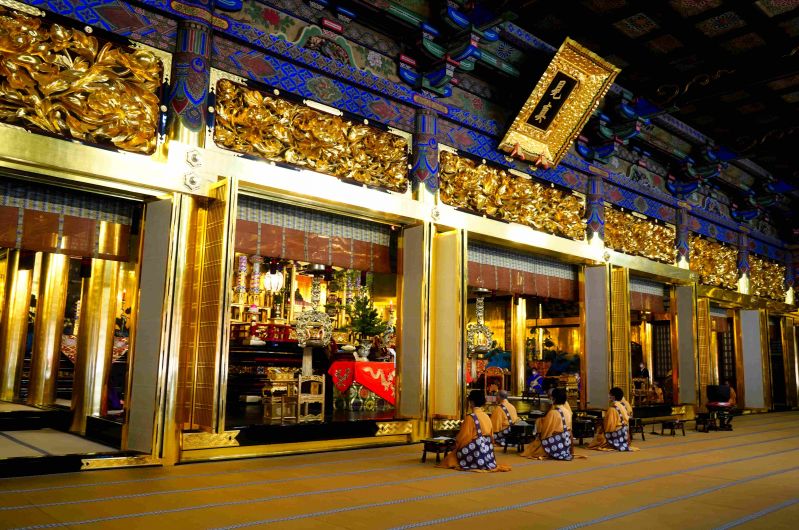
Tsu City, the capital of Mie Prefecture, is home to one of the most important temples of Japan. Senjuji Temple, a veritable storehouse of numerous cultural properties, is the head temple of the Takada school of Shinshu Buddhism, which has over 600 temples nationwide. Senjuji Temple, also called Takada Honzan, offers many cultural and memorial events throughout the year. This time I was there during Oshichiya Hoonko: Seven Nights Memorial Service.
Written by Mutlu SAYAR (MuuSensei)
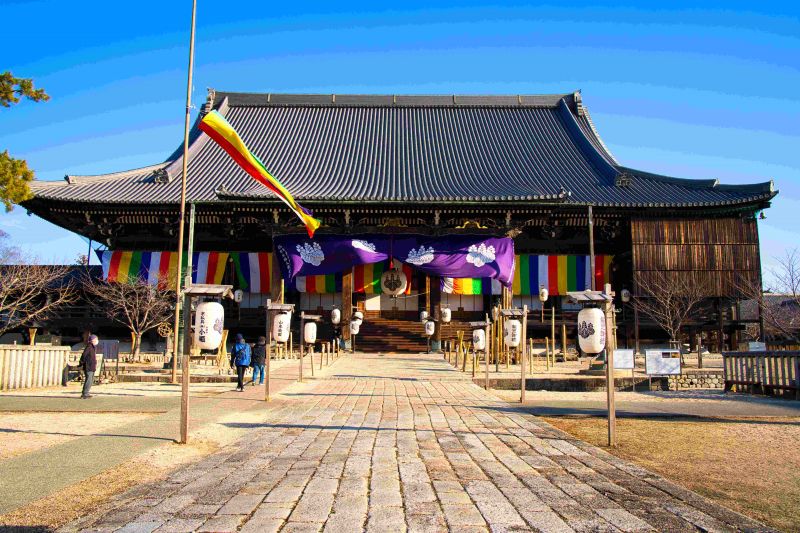
Being one of the largest Buddhist temples in Mie Prefecture, Senjuji has many temple structures, 11 of which have been designated as Important Cultural Properties. Two main buildings, Mieidō and Nyoraidō, were the first in Mie Prefecture to be recognized as National Treasures.
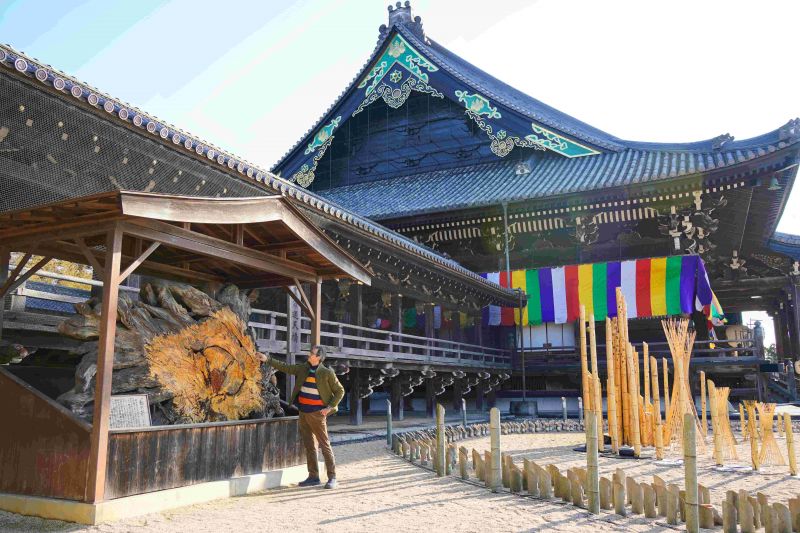
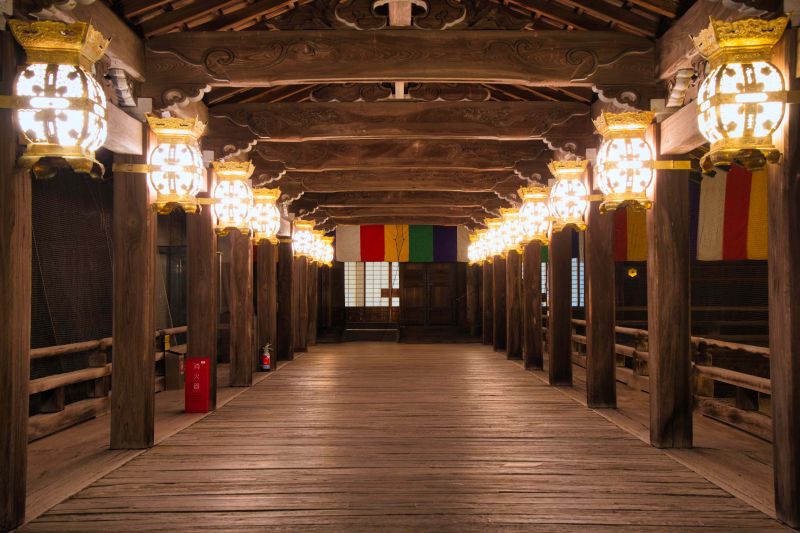
Mieidō and Nyoraidō are connected with a bridge named Tsūten Bridge, which is also recognized as an Important Cultural Property, and decorated with golden lanterns. It already has an authentic view during the daylight but I really enjoyed it in the evening when the lanterns were lit.
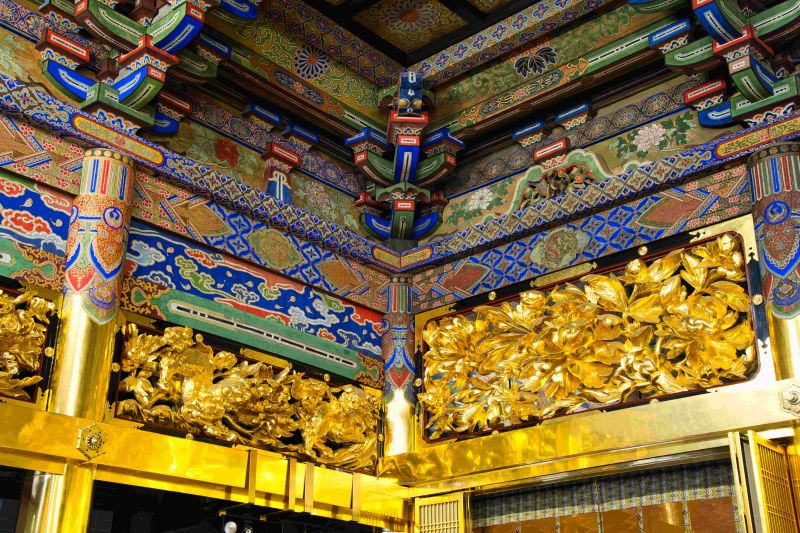
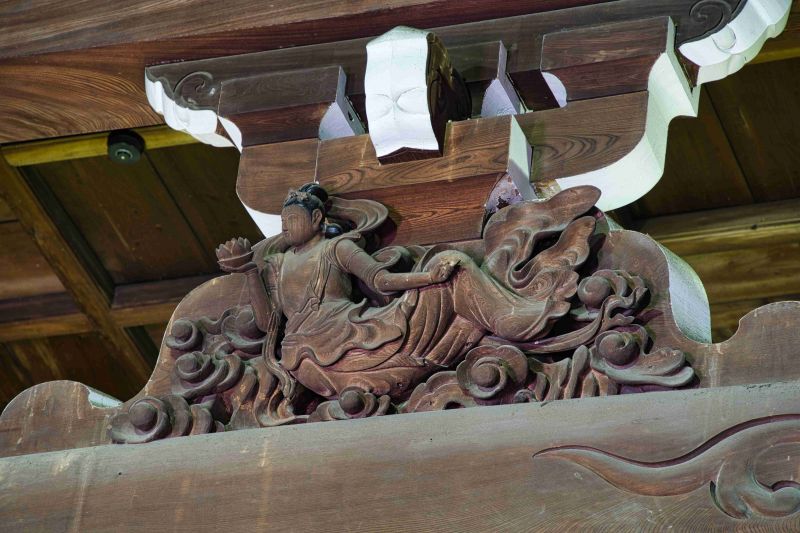
Within the buildings, wood carved statues can be seen all around on the ceilings and beams. Some of them are not easily spotted but all of them are beautiful artworks. As if it was a challenge, I found and photographed many of them. I am showing only a few of them in this article because I want you to feel the same pleasure and satisfaction of discovering them yourself when your visit.
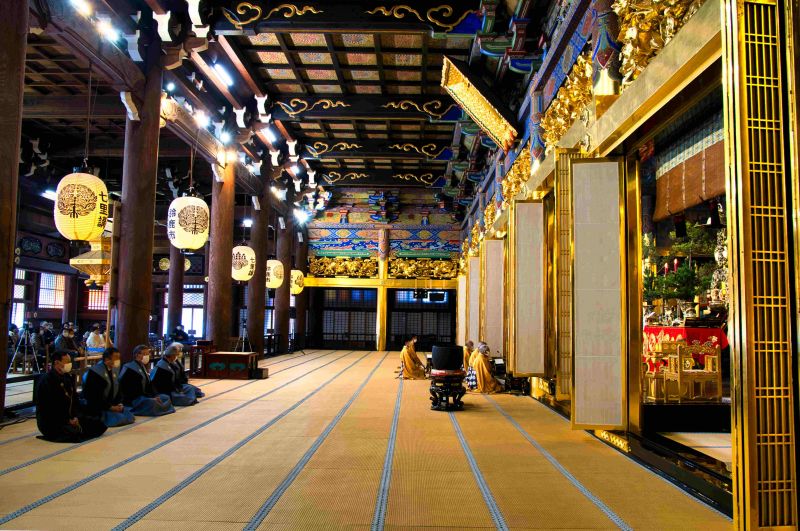
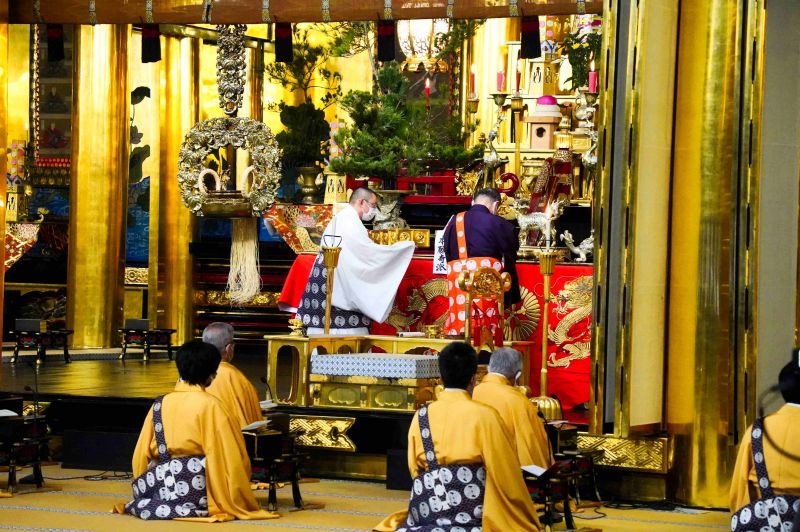
Mieidō is the largest building at Senjuji. The hall is designed for large gatherings and is used for sermons and other services. I was able to catch one of the sermons and I was amazed with the discipline and the elegance of the priests and monks who took part in it.
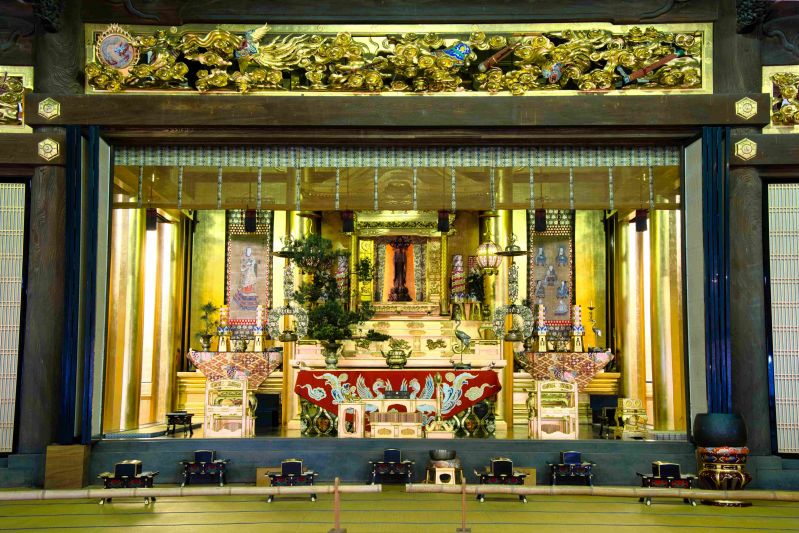
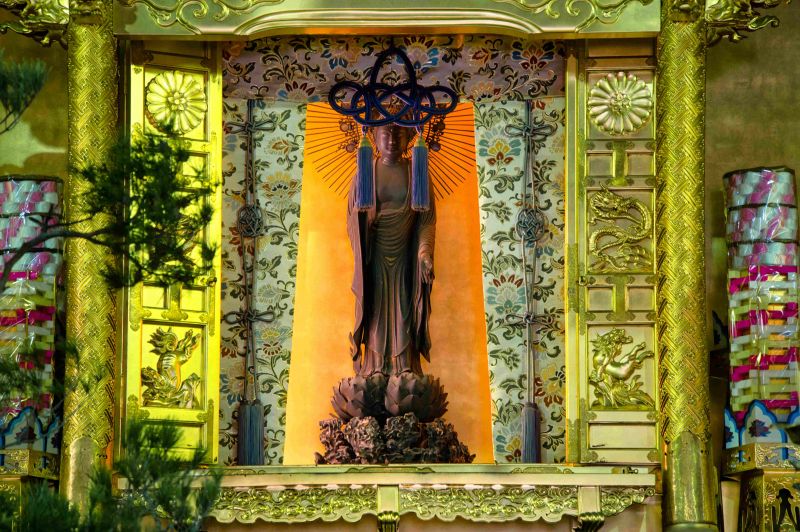
The hall of Nyoraidō is the primary worship hall. In Buddhist temples, the main object of worship is often enshrined and concealed in a cabinet called zushi, which is placed in the middle of the main hall called hondo. In this case, it is revealed and visible on special occasions only. When I visited Kongoshoji Temple in Ise, also in Mie Pref., the main object of worship was hidden. In Senjuji Temple, both the panels of the hondo and zushi were open, and the main object of worship was visible.
Every year on January 9-16, Senjuji organizes a memorial event for Shinran Shonin, who is the founder of Shinshu Buddhism. This event is called Hoonko, as well as Oshichiya which means seven nights because it lasts for seven nights.
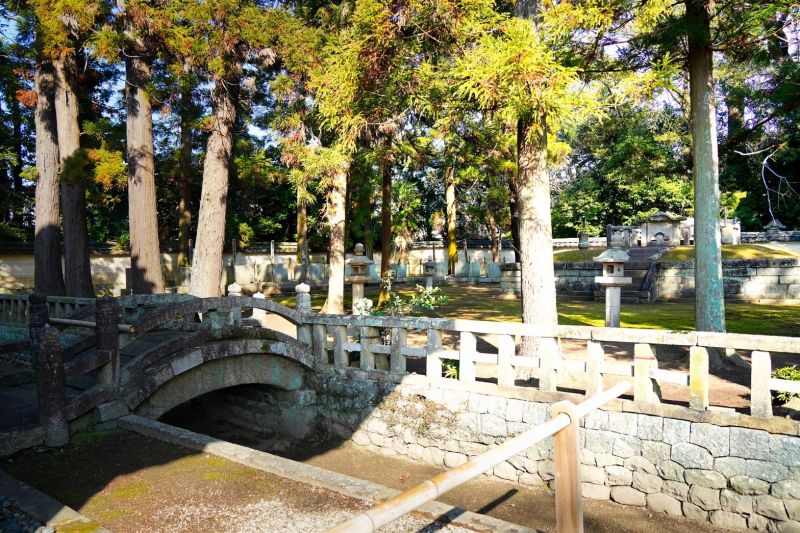
Cremated remains of Shinran Shonin rest in his mausoleum within Senjuji Temple grounds. The teeth relics of Shinran Shonin are interred here. The grave is visible but not reachable.
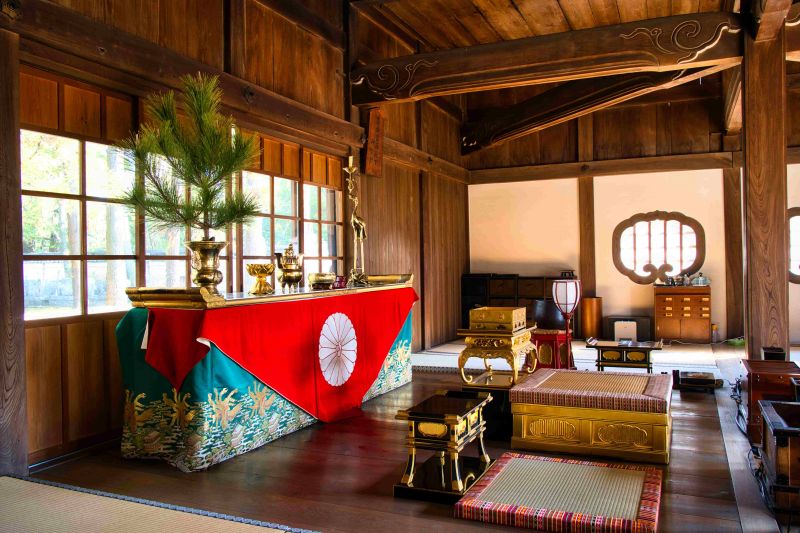
Right before his grave there is a small building called Gobyō haidō, where people worship. The final memorial ceremony of Oshichiya also takes place here on January 16, the day of his passing. Higher priests come here and gather around the altar for prayer.
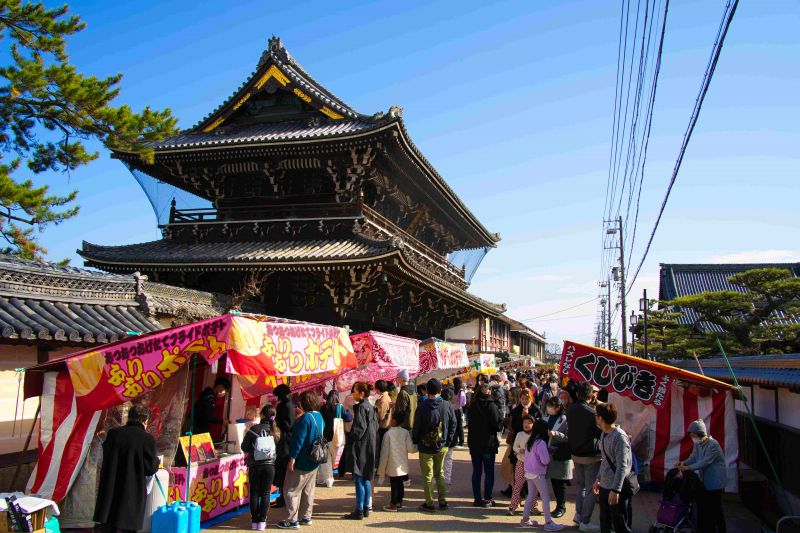
Even though it is a memorial event, the week of Oshichiya is also a chance to enjoy festival-like attractions outside of the temple walls. Portable shops and stands are installed along the streets where you can get snacks or your lunch, play games to win prizes, buy souvenirs for yourself and toys for the children. Streets get very crowded until evening hours. Similar fairs can be seen all around Japan on special occasions like cherry blossom seasons.
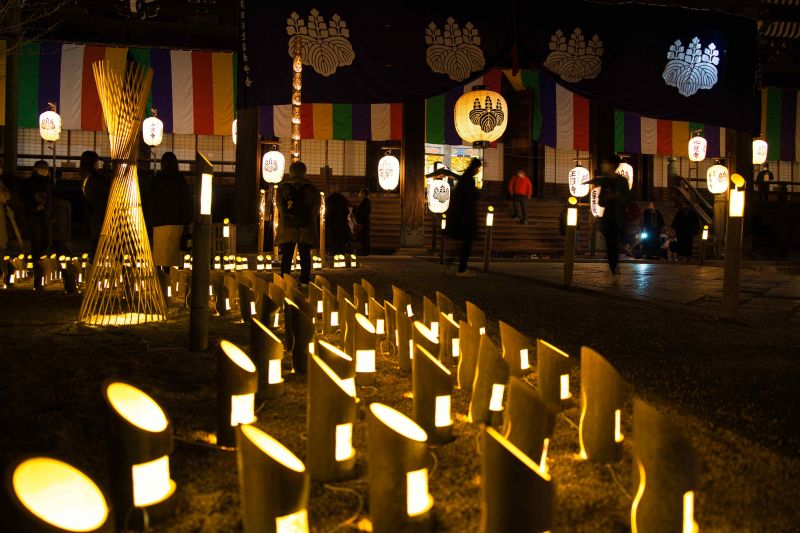
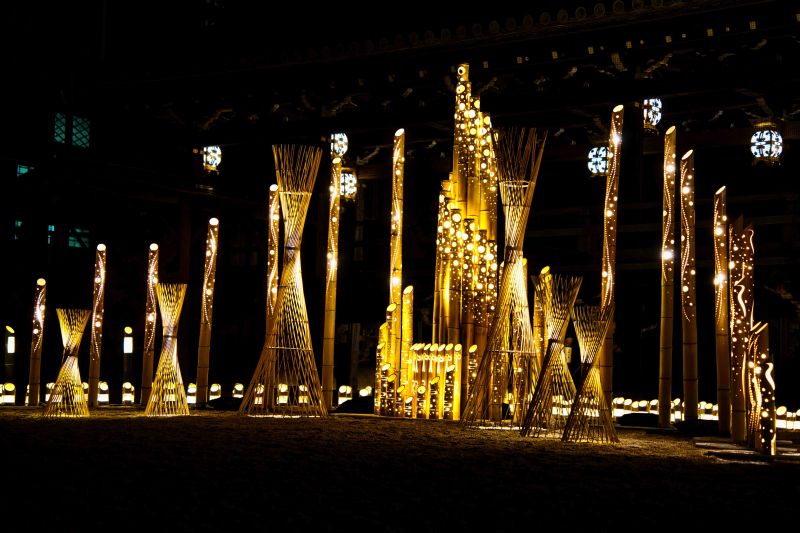
The courtyard of Senjuji was decorated with bamboo lanterns, called takeakari. They were lit in the evening hours and create beautiful illuminations. The takeakari event is also special to Oshichiya Hoonko week. Even though temple gates are closed in the early evening hours every day, they were kept open until 23:30 only on January 15, the last night before the end of Oshichiya.
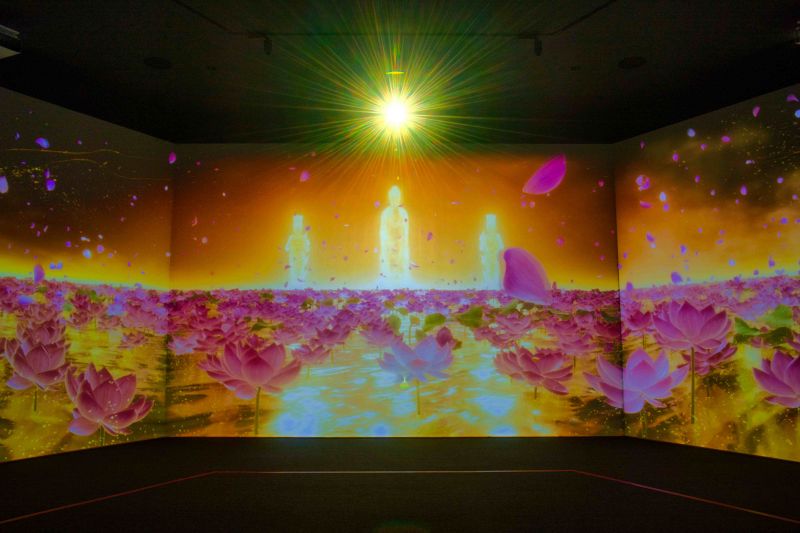
There are always a lot of things to do, learn, visit and enjoy in the temple grounds every season. When I was at Senjuji, the treasure museum was under renovation. The new museum is scheduled to open in May 2023 to commemorate the 850th anniversary of the birth of Shinran Shonin. I was able to see the pre-opening event of the museum, which was a VR show in 360-degree immersive digital video theater. The images of paradise were depicted with lotus flowers.
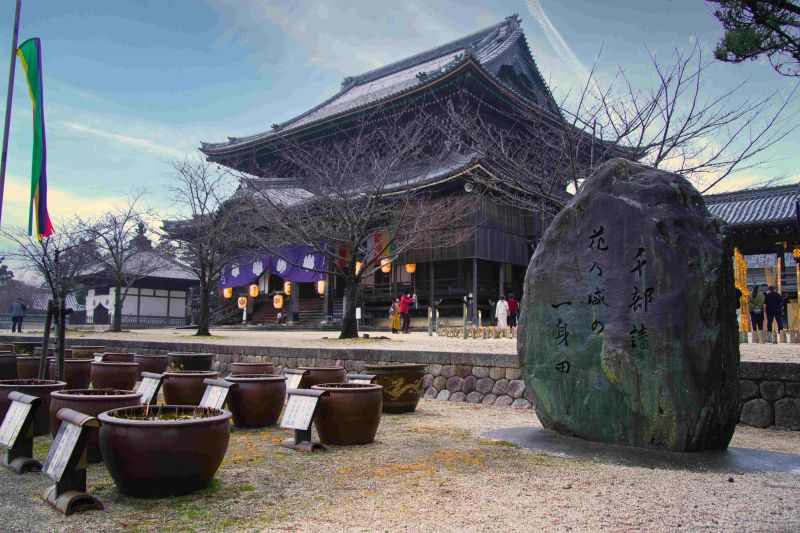
It is believed that lotus flowers blossom in the Pure Land. In over 100 pots on the temple grounds, there are 35 varieties of lotus flowers which bloom during summertime.
With all the above and more, you should add Senjuji Temple to your list of must visit places in Japan. No matter which time of the year you come, you will always be welcomed by Tsu City, the capital of Mie Prefecture.